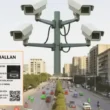Sindh Chief Minister Murad Ali Shah has approved the expansion of the Karachi Safe City project, directing officials to accelerate implementation to ensure timely completion of this major public safety initiative.
Chairing a review meeting at the Chief Minister’s House, Shah emphasized that the Safe City project was not merely a surveillance plan but a comprehensive civic security system designed to modernize policing, improve traffic management, and enhance emergency response.
Officials briefed that Phase One, launched in May 2024, will be completed by November 30, 2025, featuring AI-powered cameras, command centers, and database integration for law enforcement agencies.
Interior Minister Zia-ul-Hassan Lanjar informed that 12 Emergency Response Vehicles (ERVs) are already deployed and connected to the central command system.
Read: Karachi launches Safe City Project to combat crime with cutting-edge technology
The Chief Minister instructed the Safe City Authority to ensure seamless data connectivity and integrate NADRA, police, and vehicle databases for smart policing. He stressed that timelines and quality standards must be strictly maintained.
Under Phase Two, surveillance coverage will expand to DHA, South, East, and Malir districts. The plan includes installing 4,750 new cameras, upgrading 1,750 existing units, and adding 3,000 Intelligent Traffic System (ITS) cameras to support e-challan operations.
The system will integrate with the Safe City Platform, expanding the Central Command and Control Center at CPO Karachi to monitor 6,000 cameras.
Two regional centers will also be established at DIGP South Office and Civic Center, equipped with 3D dashboards, computer-aided dispatch systems, and advanced analytical tools.
Shah directed the Finance and Home Departments to finalize the financial model to prevent administrative delays.
He reiterated that Karachi’s security and economic stability depend on the success of the Safe City project and ordered departments to submit progress and transition reports for smooth implementation of Phase Two.











